How To Use Your Best Stockmanship When Moving to Greener Pastures
Stockmanship takes on extra importance and value when moving animals in a regenerative ranching operation.
Regardless of ranch size or management methods, stockmanship serves as a cornerstone of ranching. For more intensively managed operations utilizing regenerative grazing methods, however, proper livestock handling and close observation are essential, and in turn drive and inform many herd-management decisions.
“Stockmanship becomes a priority, because your animals will tell you when they’re content, and they will tell you when something is insufficient — whether that be forage availability or nutrition,” says Caitlin Word, livestock consultant for Noble Research Institute. Proper stockmanship also can pay off in reduced labor, improved animal comfort and performance and, ultimately, an improved bottom line.
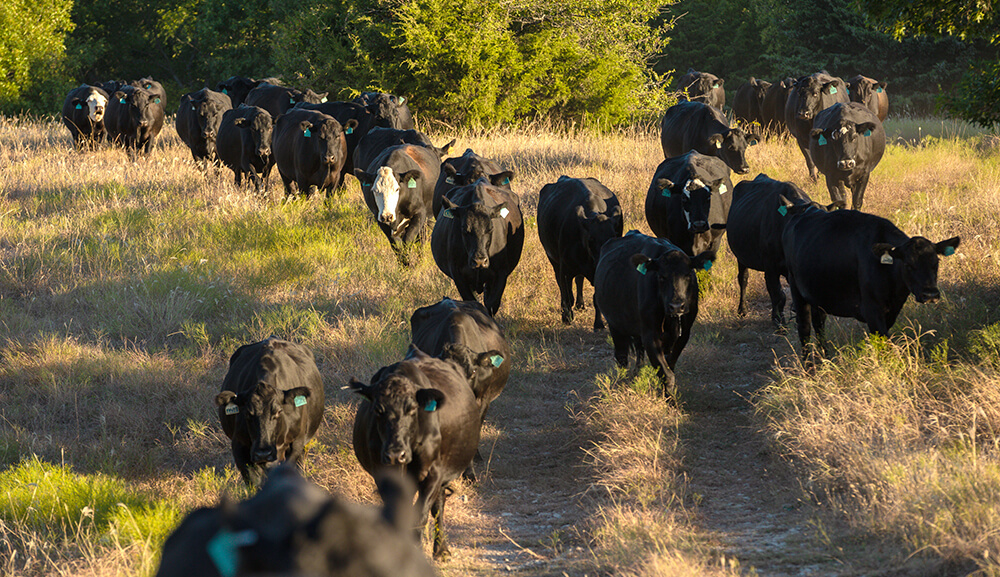
Contented creatures are a good sign
Word uses contentedness as a critical metric for evaluating grazing management on the Noble Ranches. The body language and habits of the animals serve as cues for observant ranchers.
“You’ll notice whether the cattle are comfortable whenever you move pastures,” Word says. “Understanding body language and cues, such as if they’re meeting you at the gate ready to move or bawling before you even get there, lets you know if the cattle have been on a pasture too long or are getting enough to eat.”
Simple habitual indicators also help ranch managers tell if their animals are content. Ruminants often go out and graze before bedding down midday to rest, digest and ruminate. Taking note of these “ruminating” periods (timing, frequency and duration) can tell a manager a lot about their animals’ grazing patterns.
On the other hand, Word says, “If you notice that it is the absolute heat of the day and your animals are constantly grazing and never seem to get content, that probably means they can’t afford to rest from grazing because there isn’t enough forage quality or quantity, and they’re having to hustle to meet their needs.”
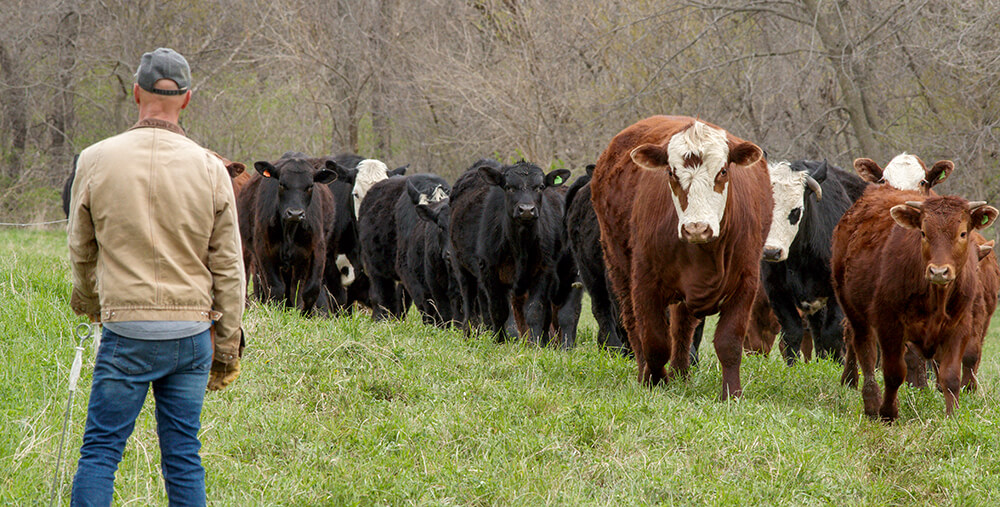
Avoid bawling congregations
One of the best indicators of animal contentedness is their reaction when it is time to move pastures. Cattle crowding or bawling at the gate when you arrive can mean they didn’t have adequate forage for that grazing period.
Likewise, carefully look for and note certain behaviors after the animals move into a new paddock.
“If cattle come through the gate and immediately begin to graze and block traffic at the gate, it can often mean they’re too hungry to explore deeper into the paddock,” Word says. “You may not have had enough forage in the last paddock, or you left them there too long. You can use these behaviors as a metric to help you time your next move.”
Ideally, she says, satiated and calm animals will enter the new pasture or paddock and slowly make their way to the backside of the paddock. Cattle often do this as a way of exploring their new boundaries and scoping out new forage availability – maybe seeking preferential forage species or communities.
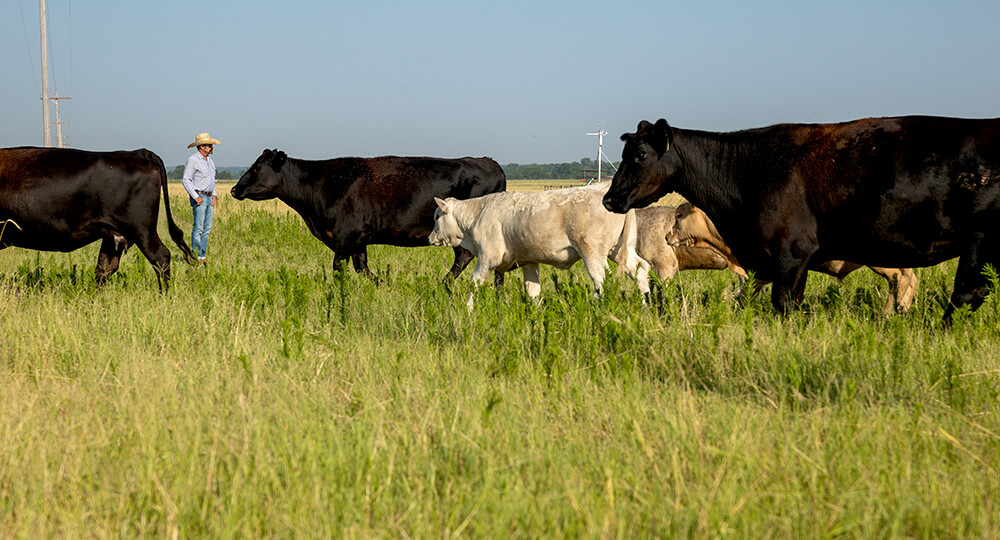
Slow and steady is the way
Not all animal behavior at a newly opened gate can be chalked up to hunger, though. Some comes down to good old-fashioned stockmanship.
Moving cattle or other ruminants offers ranchers an excellent opportunity to assess and check on their stock as they change pastures. However, if livestock have a history of poor handling or even a lack of handling, they likely won’t respond well to pressure from either the caretaker or a small paddock, and you run the risk of them blowing out a fence.
Ensuring your animals are calm enough to exhibit behavior that truly reflects their contentedness takes a little finesse and a lot of patience, Word says. Getting in a hurry to move intensively managed livestock is the most common mistake she sees ranchers make.
“Think of it like slow is fast,” she says.
Calmly regulating the flow of livestock while letting them choose to enter a new pasture or paddock can be an art of inches, not miles. Especially in the beginning, an animal’s flight zones can exaggerate any of the handler’s movements, leading to more frustrating consequences, such as trampled fencing and learned bad habits.
“Sometimes you might take two steps when one was sufficient, and two was too much,” Word says. “Making big movements is one of the worst things you can do when you’re trying to work with a large number of animals in a small paddock, because you can really drive them to too much pressure pretty quickly.”

Take time to train and acclimate
Noble Research Institute’s ranch managers don’t get in a hurry when moving their grazing animals. After acclimating new stock to people and electric fencing in sturdy-built training paddocks, Kevin Pierce, ranch manager at Noble’s Red River Ranch, often spends up to an hour moving new stocker cattle to a new pasture for the first time. He calmly stands next to the open gate and lets the calves slowly filter past him into the fresh pasture. Usually, during this first encounter, the first few calves may blow or race past him after much hesitation before they and the rest of the herd realize he isn’t a threat.
Soon, that same set of calves will easily and calmly file through an open gate to greener pastures in less than ten minutes. By standing at the gate to filter the flow of cattle, ranchers like Pierce and Word can assess their stock and check all the animals.
“There’s a lot of value to that, because then you get to set eyes on every single animal while they’re in a calm state, and if something’s wrong, you have a greater chance of seeing it sooner,” Word says.
Fortunately, grazing animals that are moved often (and calmly) begin to associate their caretakers as their cue to move and often prefer to follow than to be pushed. This “pull” instead of “push” dynamic can be a timesaver with livestock that know the routine.
“There’s this concern about labor to move cattle more often on regenerative ranches,” Word says. “You think you are going to need more people to move cattle. But, often, it’s the opposite. One person can move a large number of head of grazing animals because they want to follow and they know the drill – and they’re well-accustomed to the reward of fresh forage.”
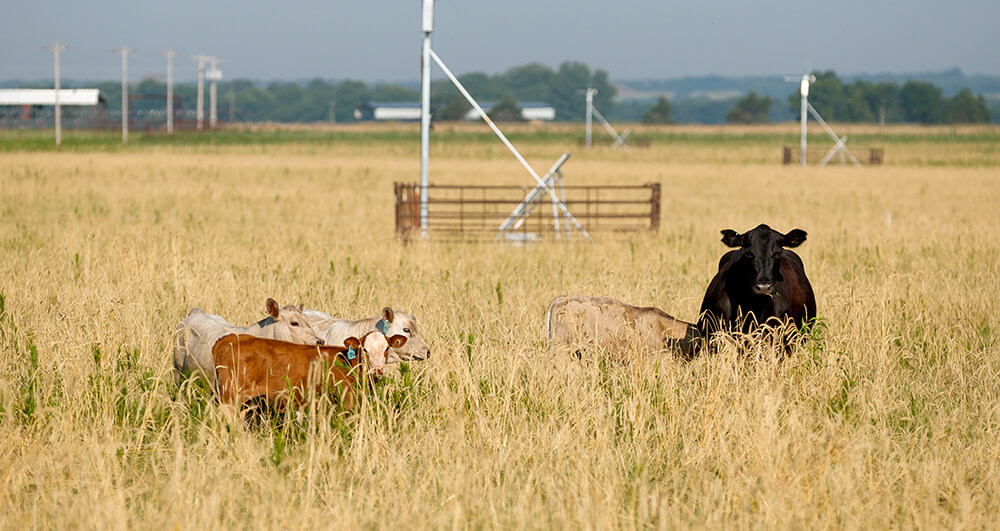
Stockmanship with small ruminants
Although intensive grazing discussions often tend to be cattle-centric, Word urges everyone not to forget about working with small ruminants — goats and sheep. While all species have management quirks – such as the follow-the-leader dynamics of sheep, and goats’ escape-artist reputations – stockmanship is still an essential ingredient for success. And, in the case of small ruminants, stockmanship includes the livestock guardian dogs.
“Having a good relationship with your guardians is a lifesaver, because the dogs have a closer relationship with that herd or flock than you ever will. The livestock trust the dogs,” Word says. “The dogs often have to feel comfortable and safe with the move before they’ll lead the flock into a new pasture. They may hold up the gate until they feel confident, but once they’re through, the entire flock goes without hesitation. For me, the importance of stockmanship when it comes to small ruminants has much to do with your guardians.”
No calf left behind
Moving young pairs (or livestock in the heat of calving/kidding/lambing season) are a special case, because just throwing open the gate to move the group can cause some hiccups. Before starting the move, take a quick inventory of the herd and ensure all the cows have had time to retrieve their calves and gather at the gate. Letting the whole herd arrive at the gate before moving can be a lesson in patience, but is imperative to keep animals paired up. If you see straggler cows, they may have a young calf bedded down or have not yet picked up their calf to move. Once the herd has filtered into the new field, again note their behavior.
“Pay attention to behavior cues. If you have a cow falling behind the herd, is restless, not grazing well or traveling the fence line, she probably has a calf behind in the previous pasture,” Word says.
The best course of action for a straggling or hidden calf is to let the dam go back to retrieve it. Otherwise, unnoticed calves can often be hard to catch or coax through the gate. You don’t want the cow and calf to run the fence or potentially blow through it to reunite, or worse, for a calf to be left behind for too long.
Word also suggests using experienced herd members to help break in first-calf heifers. If your operation’s management can allow, comingling cows and heifers can be a great way to show heifers the ropes when keeping tabs on calves.
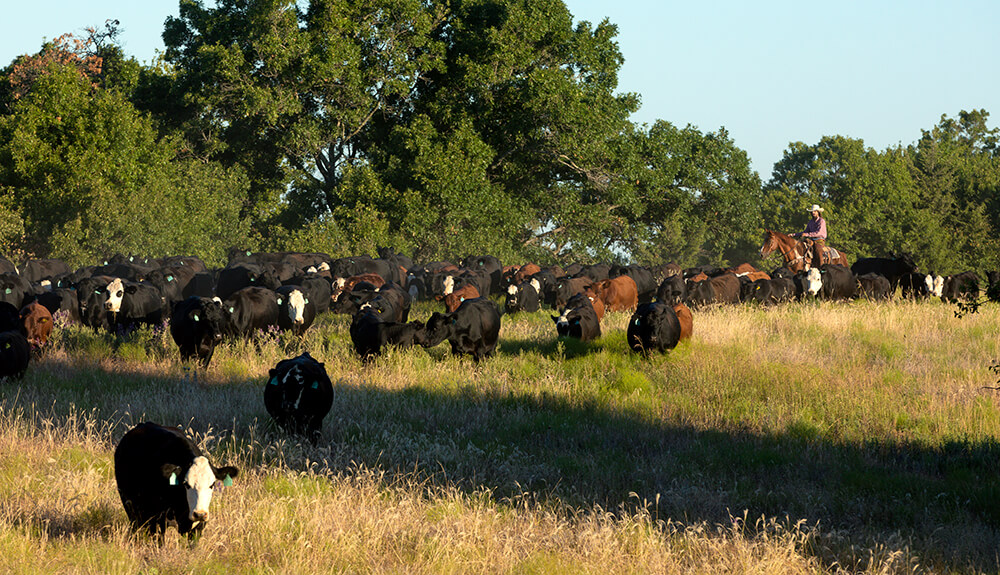
Stockmanship is all about relationships
Whether it is the bond between ranchers and their herds or between livestock guardian dogs and their flocks, stockmanship is first and foremost relationship-based. Strive to not only understand the relationships between animals within a herd, but also to build a positive relationship with them. As Word says, the relationship between man and animal is a sacred thing. It is also a reflection of how your holistic, regenerative ranching system is working.
“It’s all working together, and that includes the animals and yourself,” she says. “If you find yourself constantly having to work against your animals, find it generally unenjoyable, or if your animals dread seeing you, there’s something broken in the system.
“Regenerative ranching is all about these systems working together for a shared purpose, and if you don’t cultivate that relationship with your livestock as much as you do your business or your land, the whole system will suffer.”

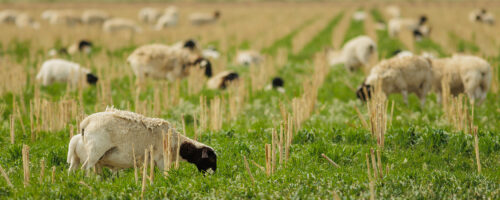
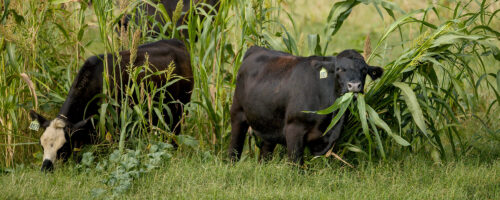
Comment